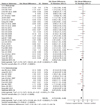1. Chan SS, Leung VP, Tsoh J, Li SW, Yu CS, Yu GK, et al. Outcomes of a two-tiered multifaceted elderly suicide prevention program in a Hong Kong chinese community. Am J Geriatr Psychiatry. 2011; 19:185–196.

2. Conwell Y. Suicide in later life: a review and recommendation for prevention. Suicide Life Threat Behav. 2001; 31:Suppl. 32–47.
3. Corcoran J, Dattalo P, Crowley M, Brown E, Grindle L. A systematic review of psychosocial interventions for suicidal adolescents. Child Youth Serv Rev. 2011; 33:2112–2118.

4. Crosby AE, Han B, Ortega AG, Parks SE, Gfroerer J. Suicidal thoughts and behaviors among adults aged ≥18 years--United States, 2008-2009. MMWR Surveill Summ. 2011; 60(13):1–22.
5. De Leo D, Scocco P. Treatment and prevention of suicidal behavior in the elderly. In : Hawton K, van Heeringen K, editors. The international handbook of suicide and attempted suicide. NJ: John Wiley & Song. Ltd;2000. p. 555–570.
6. Fairweather AK, Anstey KJ, Rodgers B, Butterworth P. Factors distinguishing suicide attempters from suicide ideation in a community sample: Social issues and physicalhealth problems. Psychol Med. 2006; 36:1235–1245.

7. Glass GV. Meta-analysis: An approach to the synthesis of research results. J Res Sci Teach. 1982; 19:93–112.

8. Health & Welfare Committee. Law for suicide prevention and the composition of life-respect culture. Seoul: Author;2011.
9. Hedges H, Olkin I. Statistical methods for meta-analysis. Orlando, FL: Academic Press;1985.
10. Hooven C, Herting JR, Snedker KA. Long-term outcomes for the promoting CARE suicide prevention program. Am J Health Behav. 2010; 34:721–736.

11. James RK, Gilliland BE. Crisis intervention strategies. 4th ed. Singapore: Thomson;2001.
12. Kim JI, Yoon HS, Han SO. Effects of the program improving adjustment to military life, on stress, depression, idea of suicide, self-esteem, and adjustment to military living in auxiliary police. J Korean Acad Fundam Nurs. 2008; 15:387–394.
13. Kim MS. Meta-analysis for intervention effect of suicide prevention program. Korean J Soc Welf Res. 2012; 30:27–56.
14. Kim YS. The effect of a group counseling program on depression and suicidal prevention in high school students. J Korean Acad Community Health Nurs. 2009; 20:343–350.
15. Korea Institute for Health and Social Affairs. Policy issues and directions for a rapid increase in suicides in Korea. Seoul: Author;2012.
16. Lee SY, Choi WG, Kim CK. Effectiveness of a reality therapy-based group counseling program on the reduction of adolescent depression and suicidal ideation. Korean J Youth Stud. 2005; 12:141–186.
17. Lester D. Psychotherapy for suicidal clients. Death Stud. 1994; 18:361–374.

18. Lim KS, Kim HS. Effect of life respect programs for the elderly on depression and suicidal ideation of elderly. J Welf Aged. 2012; 55:201–222.
19. Maltsberger JT. The prevention of suicide in adults. In : Leenaars AA, editor. Life span perspectives of suicide. New York: Plenum Press;1991. p. 295–307.
20. Maris RW. Pathways to suicide: A survey of self-destructive behaviors. Baltimore: Jones Horkins University Press;1981.
21. Ministry of Health & Welfare. OECD Health Data 2011. Seoul: Author;2012.
22. Moon DK. A meta-regression analysis on related variables of adolescents' suicidal ideation. Cheongju: Chungbuk National University;2011. Unpublished doctoral dissertation.
23. Ougrin D, Latif S. Specific psychological treatment versus treatment as usual in adolescents with self-harm: Systematic review and meta-analysis. Crisis. 2011; 32:74–80.

24. Robinson J, Hetrick SE, Martin C. Preventing suicide in young people: Systematic review. Aust N Z J Psychiatry. 2011; 45:3–26.

25. Rosenthal R. Meta-analytic procedures for social research. Newbury Park, CA: Sage Publications;1991.
26. Scottish Intercollegiate Guideline Network (SIGN). SIGN 50: A guideline developer's handbook. Edinburgh: Author;2012. 01.
27. Shirk SR, Gudmundsen G, Kaplinski HC, McMakin DL. Alliance and outcome in cognitive-behavioral therapy for adolescent depression. J Clin Child Adolesc Psychol. 2008; 37:631–639.

28. Sohn JN. The effects of the peer suicide prevention gatekeeper program for middle school students. J Korean Acad Psychiatr Ment Health Nurs. 2011; 20:111–119.

29. Stein BD, Kataoka SH, Hamilton AB, Schultz D, Ryan G, Vona P, et al. School personnel perspectives on their school's implementation of a school-based suicide prevention program. J Behav Health Serv Res. 2009; 37:338–349.

30. Tarrier N, Taylor K, Gooding P. Cognitive-behavioral interventions to reduce suicide behavior-A systematic review and meta-analysis. Behav Modif. 2008; 01. 32:77–108.






 PDF
PDF ePub
ePub Citation
Citation Print
Print







 XML Download
XML Download